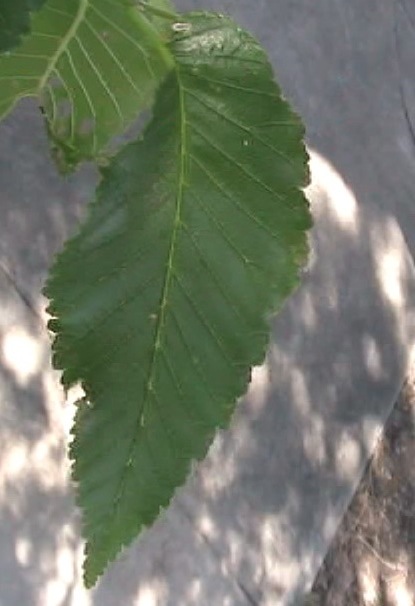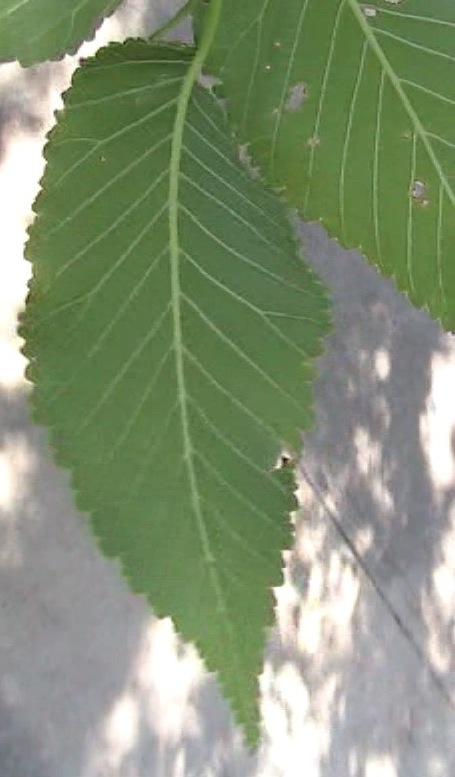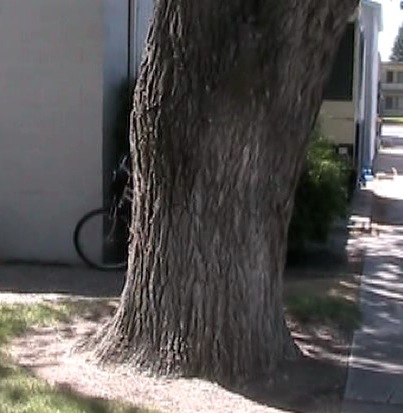| PSC 2620: Woody Trees and Shrub | Course Home | Week 7 |
Ulmus pumila - Siberian Elm
Plant Viewer
 |
 |
| The leaf is up to 3 inches long and elliptic in shape, with an oblique base and a doubly serrated margin. | The back of the leaf is a lighter green color and the pinnate venation pattern is prominent. |
 |
|
| The bark is a light gray with large ridges. |
Plant Description
Ulmus pumila, or Siberian Elm, is a trash tree and you are learning it here primarily so you will know to avoid it. I recommend the removal of any Siberian Elm on your own terms before it causes damage or spreads disease to other more desirable trees. Dirr describes Siberian Elm as: "One of, if not, the world‘s worst tree."
It grows vigorously, with little care for the conditions it is planted in. It can reach 50-70 feet high and 35-50 feet wide. The leaves are 3/4 - 3 inches long, ellipctic in shape with an oblique base and arranged alternately on the stem. The leaf is dark green and doubly serrated. Round samaras are 1/2 inch across and notched at the bottom.
Landscape Use
There is no suitable use for this tree other than as firewood.
Points of Interest
Where to start? Siberian Elm suckers and seeds constantly, it rains leaf leaf and branch litter, suffers major limb breakage from wind and snow (and possibly by just looking at it), elm leaf beetle, cankers, aphids, and dutch elm disease. Siberian Elm makes you regret ever planting it because it is extremely difficult to completely remove. The only effective way I have found is to apply potent systemic herbicides directly into the tree.